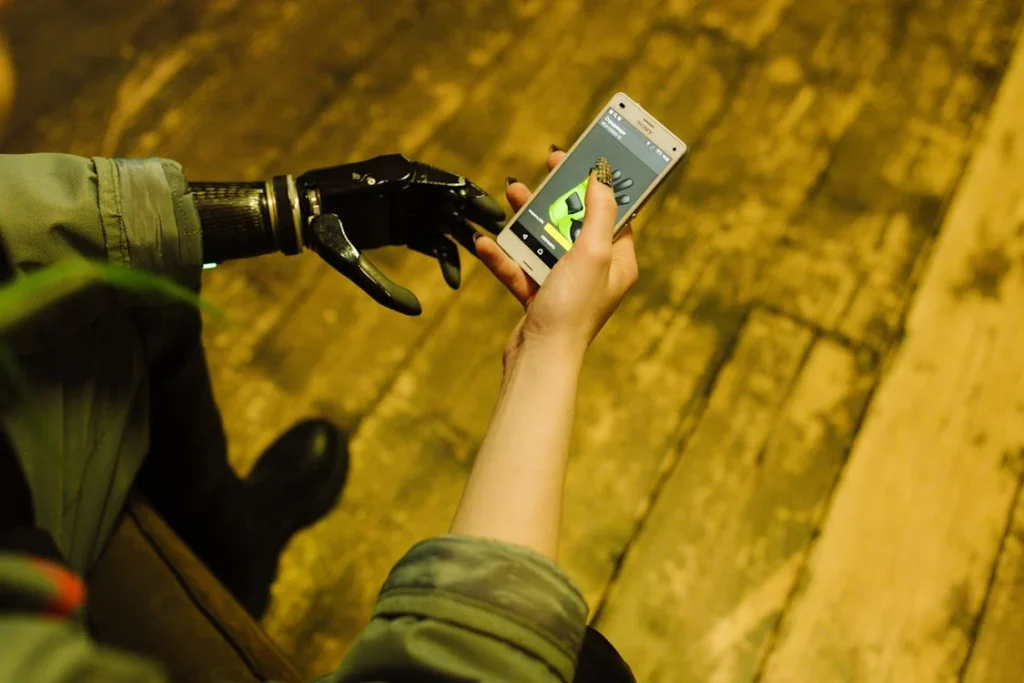Technology has come a long way in helping people regain control of their hands after limb loss. Today, bionic hands can not only open and close — they can hold, grip, and move in ways that are strikingly close to how a natural human hand behaves. But how do they do that? How can something made of metal, wires, and sensors mimic the fluid, precise, and often subconscious actions of a real hand?
This article explains how modern bionic grips copy real hand movements. We’ll go deep into the science — but in the simplest way possible. If you’ve ever wondered how bionic hands know what to do, or how they feel so intuitive for the people using them, this is for you.
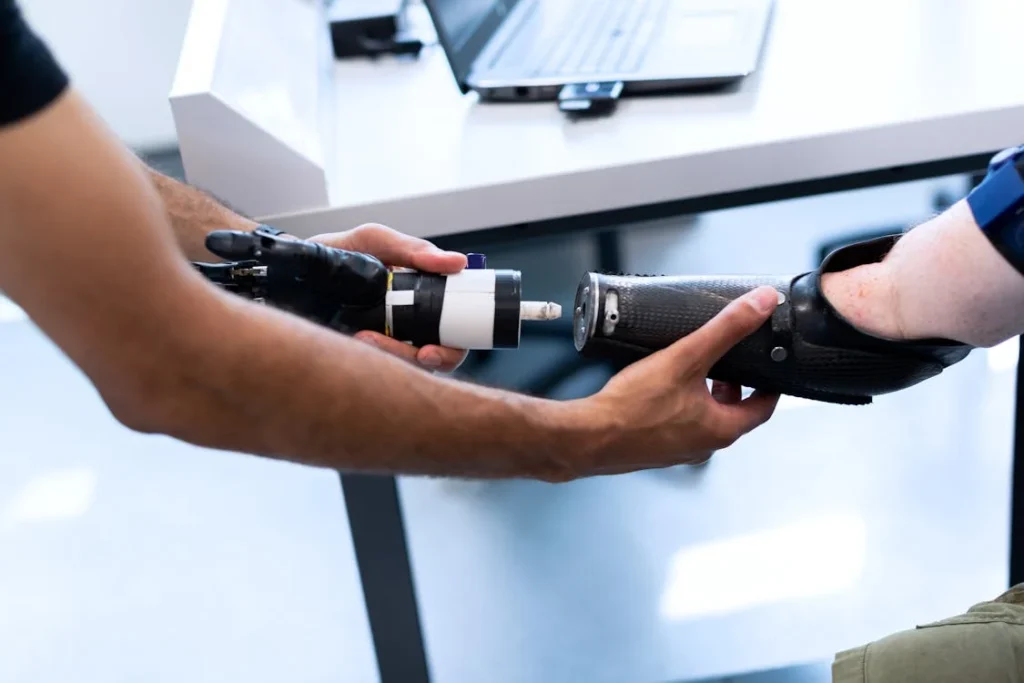
The Human Hand: A Complex Yet Beautiful Design
Why Copying It Is So Hard — But So Worth It
To understand how bionic grips try to mimic natural movements, we must first appreciate just how complex the human hand really is. Your hand isn’t just a set of fingers connected by skin. It’s a fine-tuned system of over 30 muscles, dozens of joints, and a nerve network that sends thousands of signals every second.
Your brain tells your hand to reach for something — and your body responds instantly, without needing to consciously think about which finger should bend, how tight the grip should be, or how to adjust if the object slips. You just reach, and it happens.
What makes the natural hand so amazing is not just its structure, but its ability to adapt. When you pick up a pencil, your fingers automatically use a pinch grip. When you lift a suitcase, your hand uses a power grip. When you touch someone gently, you know exactly how much pressure to apply. All of this happens without you even noticing.
So, when designing bionic hands, our challenge is clear: how do we take something as smart, fast, and effortless as the natural hand — and build it from artificial parts?
At Robobionics, our answer lies in studying the human hand in great detail. We analyze how fingers move, how the thumb rotates, and how small changes in wrist position affect grip. Every part of our design is based on real-world observation of how hands behave in everyday life — from opening jars to tying shoelaces.
To copy this natural behavior, we also study how muscles send electrical signals. These signals, measured using EMG (electromyography), form the foundation of grip control in bionic hands. By detecting and interpreting these signals, the bionic hand can react just like a real one — fast, accurate, and adaptable.
The complexity of the human hand is what makes the work both difficult and exciting. No two people move exactly the same. Everyone holds things a little differently. So our bionic grips aren’t rigid. They’re designed to learn, adjust, and mimic how each user prefers to move.
This focus on human behavior — not just mechanical function — is what makes our grips feel less like a machine and more like a real hand.
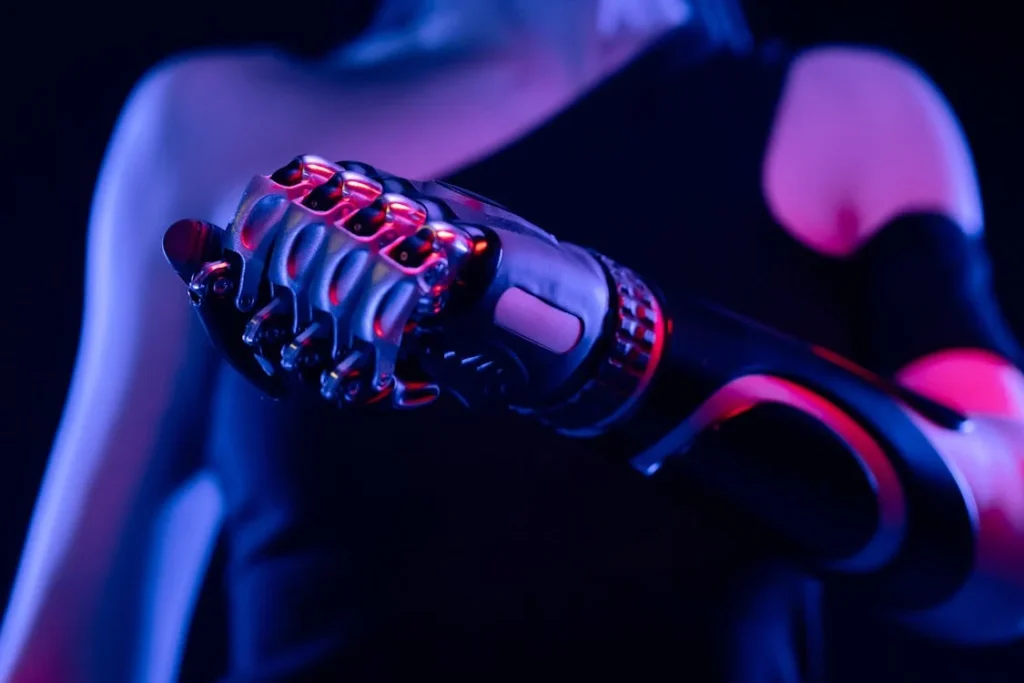
How Bionic Hands Sense and Respond Like a Real Hand
From Muscles to Motion in Real Time
The magic of a bionic hand doesn’t lie in how it looks. It lies in how it moves. And more importantly, how it responds to your body’s signals. That response is what creates the illusion — and the reality — of a natural grip.
Let’s look at what happens inside the hand when a person wants to grab something.
When you decide to hold a cup, your brain sends a signal to your arm muscles. These muscles — even if your hand is missing — still activate. They try to contract in a familiar way, as if the hand is still there. That’s where EMG sensors come in. Placed inside the socket of the prosthesis, these sensors detect those electrical signals from the muscles.
Now the job begins. The bionic hand’s internal computer receives the muscle signals and interprets what type of grip the user intends. Is it a tight squeeze? A gentle pinch? A relaxed, open hand? Based on what it reads, the hand activates small motors inside each finger.
These motors are not just opening and closing the fingers blindly. They are controlled down to the angle, speed, and strength of each movement. If the muscle signal says “tighten,” the motors increase grip force. If the signal says “stop,” the hand freezes in place. If the signal is soft, the hand gently adjusts to the right pressure.
What makes this incredible is how quickly it happens. There’s no delay. From the moment the user thinks about moving, to the moment the hand responds, it all happens in less than a second. This speed is what makes it feel natural. The user doesn’t need to stop and think about every detail. They just act — and the hand follows.
Even more impressive, many of today’s bionic grips include sensors on the fingertips. These sensors detect contact, pressure, and sometimes even motion. If an object starts slipping, the hand can automatically tighten its grip — just like a real hand would.
And because each finger is powered independently, the hand can mimic complex grip shapes. It can form a C-shape to hold a bottle. It can curve into a U-shape to hold a ball. It can rest in an open palm position when relaxed. These shapes aren’t programmed with buttons. They emerge naturally, driven by muscle signals and intelligent software.
At Robobionics, our systems are trained using real human movements. We study not just what people do, but how they do it — the angle of their wrist, the tilt of their thumb, the timing of each finger. This allows our bionic grips to feel smooth, precise, and intuitive.
The goal is not just movement. It’s confidence — the feeling that when you go to hold something, the hand will behave just as your own would have.
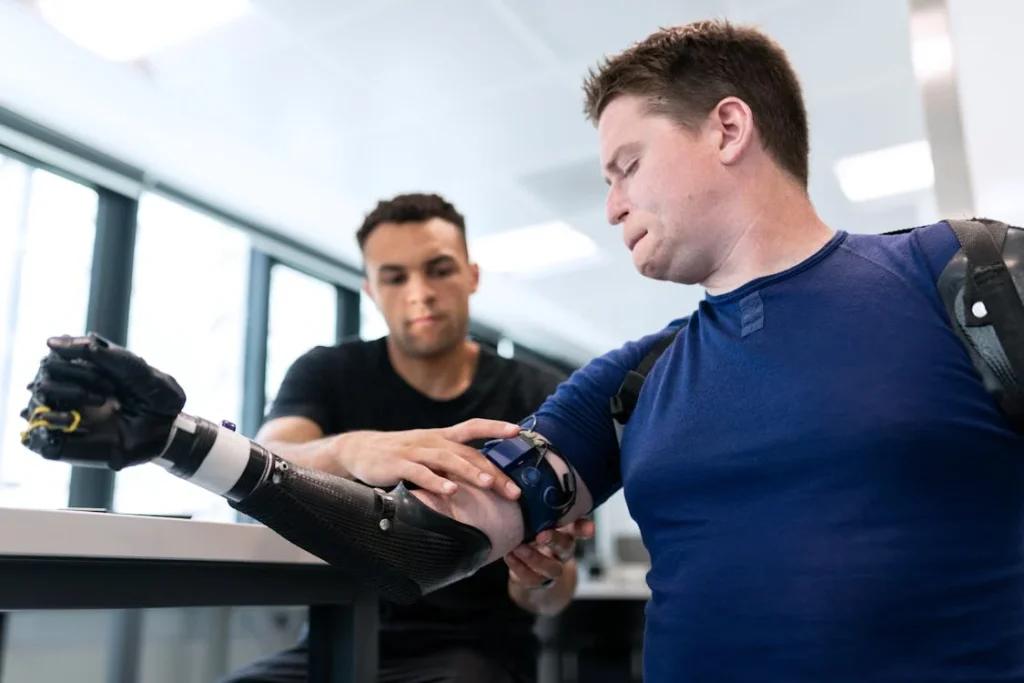
How Finger Articulation Helps Mimic Real Grips
Why Independent Finger Movement Is the Secret Ingredient
When you hold something in your hand, your fingers don’t all move the same way at the same time. Some curl more. Some stay still. Some press harder. That ability — to move each finger differently depending on the situation — is what makes human hands so effective. And to copy that in a bionic hand, you need something called independent finger articulation.
In simple words, finger articulation means the ability of each finger to bend, straighten, or rest in its own way. Most older prosthetic hands worked more like a claw — where all fingers moved together in one motion. They could grab, but not with finesse. There was no room for gentle touch or varied angles.
But in modern bionic grips, especially at Robobionics, each finger has its own motor. These motors are small but strong and controlled by software that understands muscle signals. This setup allows the fingers to work together — or separately — depending on the shape and texture of the object.
Let’s say you’re picking up a mug. Your index and middle fingers curl under the handle. Your thumb rotates to press on top. Your ring and little fingers don’t do much — they just rest. That’s a highly specific pattern. And it’s only possible if the hand can articulate each finger based on what your body tells it to do.
This becomes even more important with irregularly shaped items. Picking up a bunch of keys, holding a newspaper, or gripping the handle of a frying pan all require unique finger positions. A one-motion grip system can’t adapt to that. But independent articulation can.
Another important point is pressure control. When fingers are independent, they don’t just move at different speeds — they apply different amounts of force. This means your index finger can press harder than your ring finger, just like a real hand does. That kind of pressure variation is essential for real-life tasks — from holding an egg without cracking it, to carrying a heavy bag without dropping it.
We also program our hands to adjust finger posture during the grip. This means if you start with a wide grip and the object is smaller than expected, the fingers can reposition themselves mid-movement. It’s automatic. You don’t have to stop and reset. That kind of real-time correction makes the hand feel less like a tool and more like a true extension of your mind.
For users, this creates freedom. The freedom to do more with one hand. To cook. To write. To garden. To gesture while speaking. And to do all of it smoothly and naturally.
At Robobionics, our design process begins with watching how people move. We record the finger patterns of hundreds of different tasks, and then we use that knowledge to shape how our hands move. We’re not copying the idea of movement — we’re copying the rhythm, the nuance, the style of real life.
That’s what finger articulation brings to the table — motion that’s as flexible and expressive as the person using it.
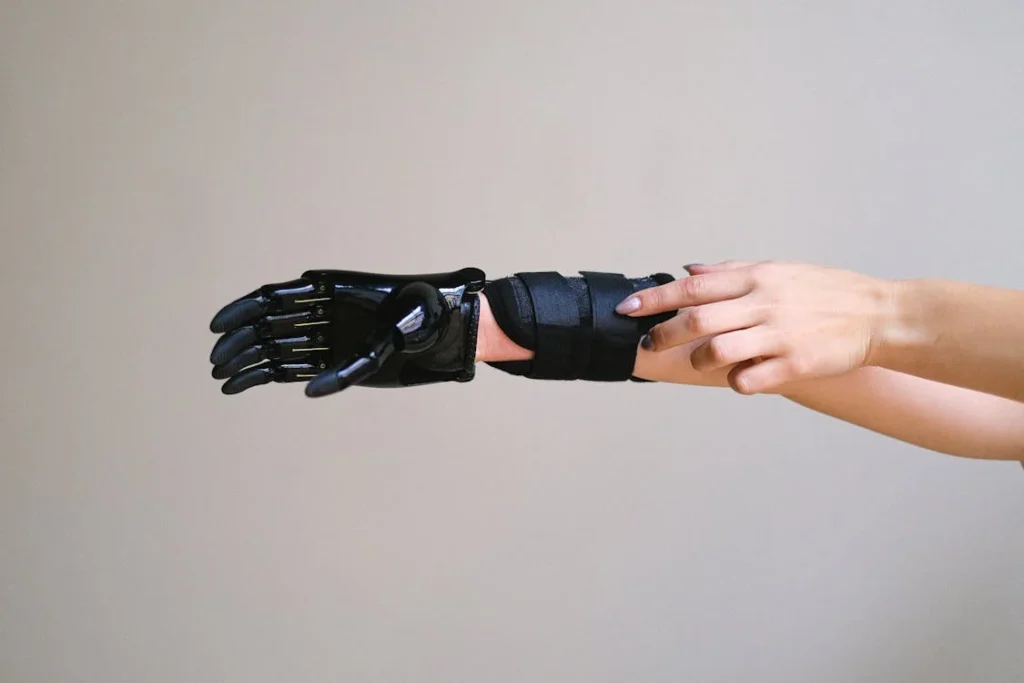
Training the Hand to Learn Your Unique Movements
Why Personalization Turns Good Tech Into Great Results
Even the smartest bionic hand needs help understanding its user. That’s because no two people flex their muscles the same way. The signals that one person produces might be strong and clear. For someone else, they might be soft and subtle. And those differences affect how the hand behaves.
That’s why personalized training is a core part of how we build and deliver our bionic grips.
When someone first gets their hand fitted at Robobionics, we spend time learning how their body talks. We ask them to imagine closing their fist, opening their palm, or pinching. As they do this, the EMG sensors inside the socket capture their unique muscle patterns. These patterns are stored and labeled, forming the foundation for how the hand will respond.
Once the initial settings are in place, the user begins a training phase. During this time, they practice basic movements — gripping a cup, picking up a phone, opening a jar. These tasks help the system fine-tune how it interprets the person’s muscle signals. If a certain muscle sends a signal that’s too weak or too strong, the software adjusts. Over days and weeks, the response becomes sharper and more reliable.
This training also helps the user. At first, many people overthink their movement. They try too hard, flexing muscles that aren’t needed. But as the hand learns them, they also learn the hand. They begin to use less effort. Movements become second nature. They start to trust the grip.
We often see this confidence grow as users do more. They stop testing. They start living. They cook meals, hold hands, play games, carry groceries. And when they do these things without thinking, we know the training is complete.
Even after the initial learning period, the system continues to adapt. It tracks how the user moves over time. If the user changes how they hold things — maybe due to healing, physical therapy, or even mood — the hand updates its response accordingly.
This is what we call adaptive intelligence. It’s not artificial intelligence in the futuristic sense. It’s simply a system that listens, learns, and improves — just like the human brain does when practicing any skill.
For us, personalization is not optional. It’s essential. It’s the difference between a device that “works” and a device that truly feels right.
When we hand over a prosthetic at Robobionics, we’re not just giving hardware. We’re giving a promise: that this hand will learn your ways, your needs, your habits — and that it will keep learning, every day, to serve you better.
The Role of the Thumb in Realistic Bionic Grip
The Unsung Hero That Makes Every Grip Possible
The thumb might look like just another finger, but in reality, it’s what makes the human hand so powerful. Nearly every grip you use in daily life involves the thumb. Whether you’re tying shoelaces, writing with a pen, or opening a water bottle — your thumb is in action. And to create bionic hands that truly mimic real hand movements, the thumb needs to be a top priority.
Unlike other fingers that mostly open and close, the thumb can move in multiple directions. It rotates, bends, and presses — sometimes all at once. It creates what’s called opposition — the ability to touch the thumb to each of the fingers, allowing for fine motor skills like holding a needle or swiping a phone screen.
At Robobionics, we treat the thumb as a central part of grip control — not just an accessory. Our designs include an independently motorized thumb that can rotate and adjust its position depending on the task. When you need a firm grip, the thumb moves inward and down, locking against the fingers. For delicate tasks, it moves slightly forward, applying gentle pressure.
The thumb’s positioning is driven by EMG signals just like the fingers, but it follows more complex rules. It needs to read not just the strength of the signal but also the intent behind it. That’s where software plays a key role. Our algorithms detect when a user is trying to perform a power grip, tripod grip, or pinch — and they adjust the thumb accordingly.
We also focus on something called thumb posture memory. Over time, the system learns how the user prefers their thumb to behave. If someone always places their thumb high when holding a spoon, the hand starts doing that automatically. This creates a grip that feels familiar and comfortable — not robotic.
Many users don’t realize how critical the thumb is until they try to live without it. Without an active thumb, the hand loses its grip strength, coordination, and even stability. That’s why we invest so much in biomechanically accurate thumb motion — because it’s the thumb that ties everything together.
A well-designed thumb in a bionic hand doesn’t just hold things. It balances the entire hand. It creates tension. It adapts to shape. And most importantly, it allows the hand to perform in crowded, awkward, or unpredictable environments — just like the natural hand would.
In the end, the thumb isn’t just a digit. It’s a partner. And when it’s designed right, it makes every grip feel right too.
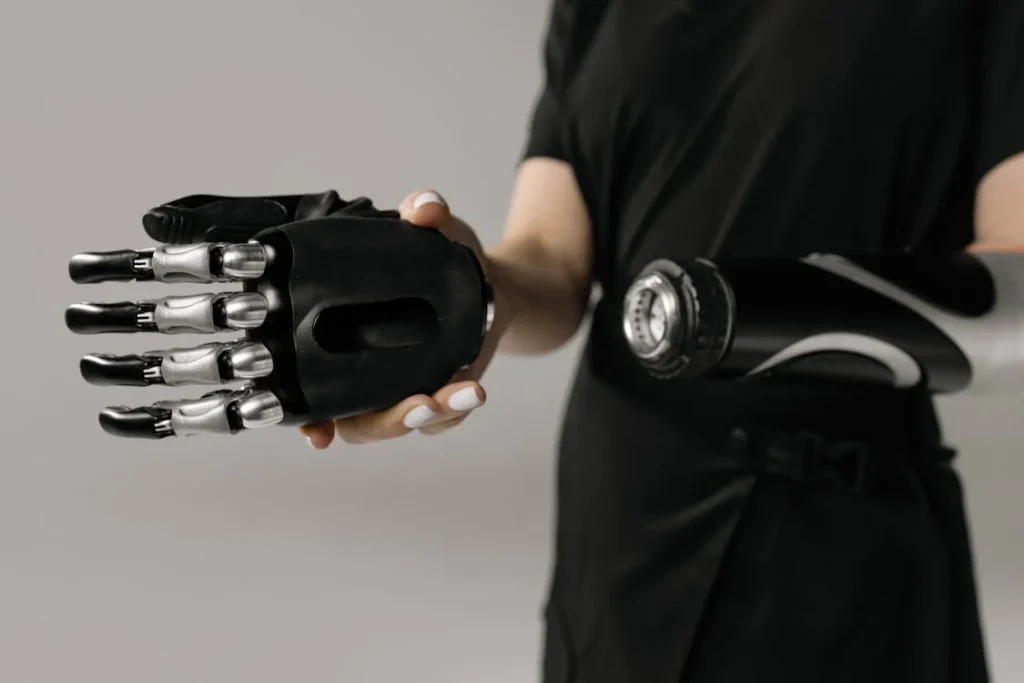
How Bionic Hands Handle Touch, Pressure, and Feedback
Making Artificial Grip Feel More Alive
Holding something isn’t just about movement. It’s about feel. Your natural hand knows when you’ve grabbed something too hard or not hard enough. It senses weight, texture, and even temperature. And while bionic hands don’t have full sensory nerves (yet), we’re making big progress in helping them feel more alive.
The key to this lies in a system called grip feedback — or as we call it, intelligent response. This system helps the hand adjust how much pressure to apply when holding something. Without feedback, a bionic grip could be too strong (crushing objects) or too weak (dropping them). Feedback allows the hand to make micro-adjustments in real time.
Our bionic grips at Robobionics include tactile sensors on the fingertips. These sensors measure pressure and sometimes contact. When you pick up a plastic cup, the sensors can detect when the cup starts to bend — a sign that the grip is too strong. The system then tells the motors to ease up. If the object starts slipping, the hand tightens its grip automatically.
This feedback loop happens quickly and quietly. It doesn’t interrupt the user or require manual input. It’s baked into the behavior of the hand, making the experience feel smoother and more secure.
Another way we simulate feeling is through vibration motors that gently pulse on the residual limb. For example, when contact is made with an object, a light vibration lets the user know they’ve made a successful grip. This is especially helpful for visually impaired users or those learning new grip patterns.
We also use variable speed motors. When the hand gets close to an object, it slows down — mimicking how a natural hand prepares to touch something. This gives the user more control and helps prevent sudden, jarring contact.
In research labs, there’s ongoing work to bring true sensory feedback — even electrical stimulation of nerves that recreates the feeling of touch. While these technologies are still developing, we’re already creating systems that feel more intuitive, thanks to smart feedback models.
We believe grip isn’t just about holding — it’s about communicating. The hand needs to listen to what it’s holding and react accordingly. That’s what makes the difference between a useful hand and a truly human-feeling one.
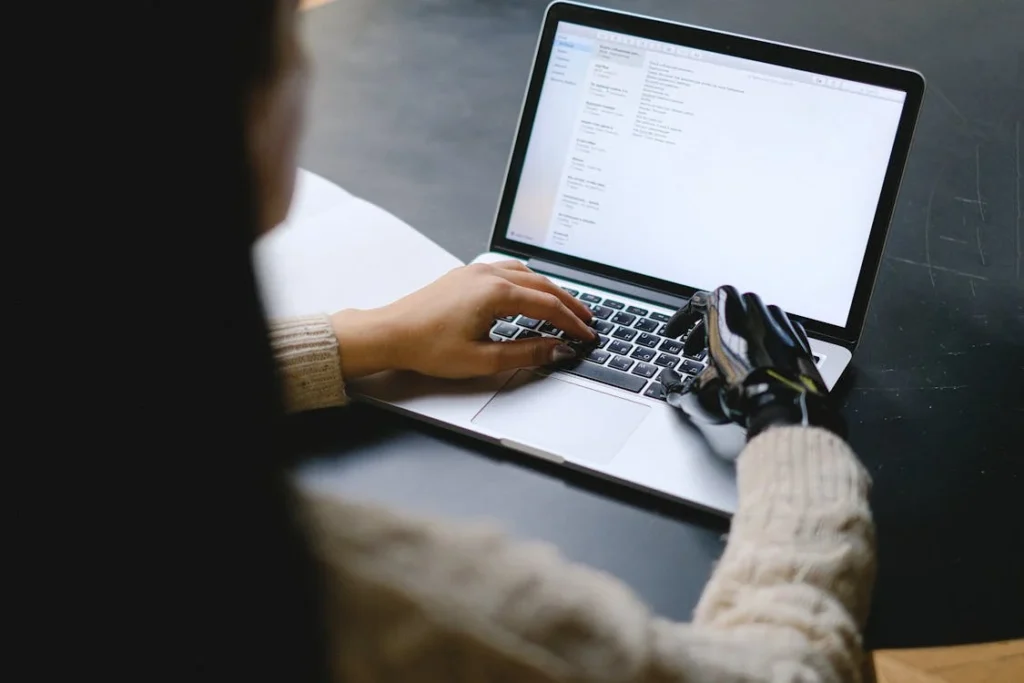
Challenges in Mimicking Natural Grip — and How We Solve Them
Turning Limitations Into Innovation
Creating bionic grips that behave like natural hands is incredibly rewarding — but it’s also full of challenges. There’s no easy way to replace a limb as complex and sensitive as the human hand. But at Robobionics, we face these challenges head-on, using every limitation as a chance to innovate.
One of the biggest challenges is signal variability. Muscle signals change all the time. They can be affected by skin moisture, electrode position, fatigue, or even emotional stress. If the signal isn’t consistent, the hand might not behave as expected.
To manage this, we build adaptive filtering systems that constantly adjust how they read EMG data. Our software learns to ignore noise and focus on true intent. This means fewer false triggers and more reliable control, even during long days or changing environments.
Another hurdle is response time. In high-stress situations — like catching a falling object — the hand must react instantly. Any lag can make the grip feel awkward or slow. That’s why we design our systems with ultra-fast processors and low-latency firmware. Every millisecond counts, and we work hard to shave off as many as possible.
Then there’s battery life. All this advanced grip control — independent motors, sensors, feedback systems — uses energy. Users don’t want to be constantly recharging. So we focus on power-efficient components and smart sleep modes that extend use without reducing performance.
Comfort is another big factor. The socket must hold EMG sensors snugly, but not painfully. If it shifts, signal quality drops. We solve this with custom-fit sockets that match the user’s anatomy, as well as flexible electrode pads that adapt to minor skin changes throughout the day.
And of course, there’s the emotional challenge. No matter how good the technology is, there’s a period of frustration when learning to use it. We design our training systems to be supportive, not overwhelming — using gentle feedback, intuitive apps, and clear progress markers so users feel confident from day one.
These challenges are real. But so is our commitment. We see every difficulty as a doorway to smarter design. And with each version of our hand, we get closer to a grip that doesn’t just mimic nature — it becomes part of it.
Conclusion
A truly great bionic hand doesn’t feel like a machine. It doesn’t make you stop and think, or worry if it’s doing the right thing. It simply moves with you, responds to you, and fades into the background — the way your natural hand once did.That’s what we work toward at Robobionics: bionic grips that mimic not just movement, but behavior. We design hands that adapt to your life, your choices, your routines — and give you back the little moments you missed.
From the curve of a finger to the press of a thumb, every movement is based on how humans move. We study the hand not as a tool, but as a partner. And we rebuild that partnership in metal, wires, and code — until it feels like it never left. Every user’s journey is unique. Some come to us wanting to hold a baby again. Some want to go back to work. Some just want to make tea without help. Whatever the goal, we believe bionic grips can help make it real.
If you’re exploring prosthetic options, or helping someone who is, remember this: your new hand doesn’t need to be perfect. It just needs to be yours — to learn you, to move with you, and to support your life in all the ways that matter. We’re here to make that happen.
Want to try our latest bionic grips or learn how they can fit your lifestyle? Reach out to Robobionics. We’ll walk with you every step of the way.



